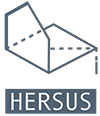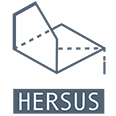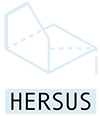Please wait while flipbook is loading. For more related info, FAQs and issues please refer to DearFlip WordPress Flipbook Plugin Help documentation.
HERSUS project Intellectual Output 3, titled “Statements for Teaching through Design for Sustainability of the Built Environment and Heritage Awareness” presents a strategy containing (1) necessary qualifications that an architect has to obtain in order to be competent for architectural and urban design, as well as (2) up-to-date qualification that architectural educator needs to obtain in order to advance teaching about the sustainability of the built environment and heritage awareness. Having in mind that the development of IO1 and IO2, as well as, HERSUS Webinar have posed different challenges for all HERSUS researchers, the IO3 aims at reaching a consensus among the HERSUS consortium on concepts and fields of action relevant to sustainability and heritage. In this sense, the initially defined fields are reviewed and hence, the IO3 enables a consensus established through a multi-geographical and multicultural perspective across Europe.
The idea for IO3 arose from the need to bring together teaching staff and experts in disciplines of the built environment to formulate the new unique students’ profiles. Statements for teaching bring the innovative element through the implementation of interdisciplinary teaching based on learning by design methodology. Upon completion of the IO3 publication, the HERSUS target groups (students/teachers/trainers/tutors) could use this book to gain a clearer picture of specific training and teaching activities that can enable the alignment of the needs of the practice and teaching of the sustainability of the urban and architectural heritage.
In the course of redefining the professional profile of architect through the HEI system, there is a constant striving towards achieving an integral profile – one that will have the capacity and skills:
(1) to connect different scales (from urban to architectural),
(2) to identify different types of problems and solve them through the design, and
(3) to make our environment and cities sustainable for the future.
This output is the primary input for the development of “Book of courses” which will be developed by the academic institutions as a part of the project (IO5). It will be presented in the form of a pedagogical strategy and should be disseminated in all schools of the participating countries and to the broader audience as well. Therefore, the strategy will be available for discussion via the “HERSUS Sharing Platform” (IO4) and HERSUS Website among educators, professionals, and architects from all over Europe.
The IO3 study is prepared in a form of publication which consist of following sections (a) Introduction: General Background, Research Phases and Methodology, Study Development (b) Teaching Vademecum on Heritage and Sustainability: Statements on Notions, Ideas, Design Strategies, Design Tactics, Tools and Techniques, and Heritage Types relevant for the HERSUS scope, and (c) Conclusions.
Each term within Teaching Vademecum is analyzed through:
- General Definition/Explanation of Notion, Idea, Design Strategy, Design Tactic, Tool and Technique, and Heritage Type,
- Literature Selection relevant for Notion, Idea, Design Strategy, Design Tactic, Tool and Technique, and Heritage Type,
- Content WHAT? – Defining relevant content for learning and teaching on specific Notion, Idea, Design Strategy, Design Tactic, Tool and Technique, and Heritage Type,
- Methods HOW? – Defining relevant methods for learning and teaching on specific Notion, Idea, Design Strategy, Design Tactic, Tool and Technique, and Heritage Type,
- Goals WHY? – Defining learning goals in line with specific Notion, Idea, Design Strategy, Design Tactic, Tool and Technique, and Heritage Type,
- Course Type – Mark course type/types which could engage specific Notion, Idea, Design Strategy, Design Tactic, Tool and Technique, and Heritage Type,
- Scale – Mark scale/scales which is relevant for learning on specific Notion, Idea, Design Strategy, Design Tactic, Tool and Technique, and Heritage Type,
- Learning outcomes – describe expected learning outcomes for students/ competencies which they could obtain through learning on specific Notion, Idea, Design Strategy, Design Tactic, Tool and Technique, and Heritage Type,
- Teachers’ Competences – explain necessary competencies of teachers to be engaged in teaching process of specific Notion, Idea, Design Strategy, Design Tactic, Tool and Technique, and Heritage Type.
The Vademecum will present a series of analysed terms according to the structure from the proposed template and will together with IO1 and IO2 represent the basis for the later creation of the Book of Courses (IO5) through the intersection of different statements.


